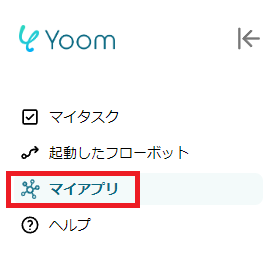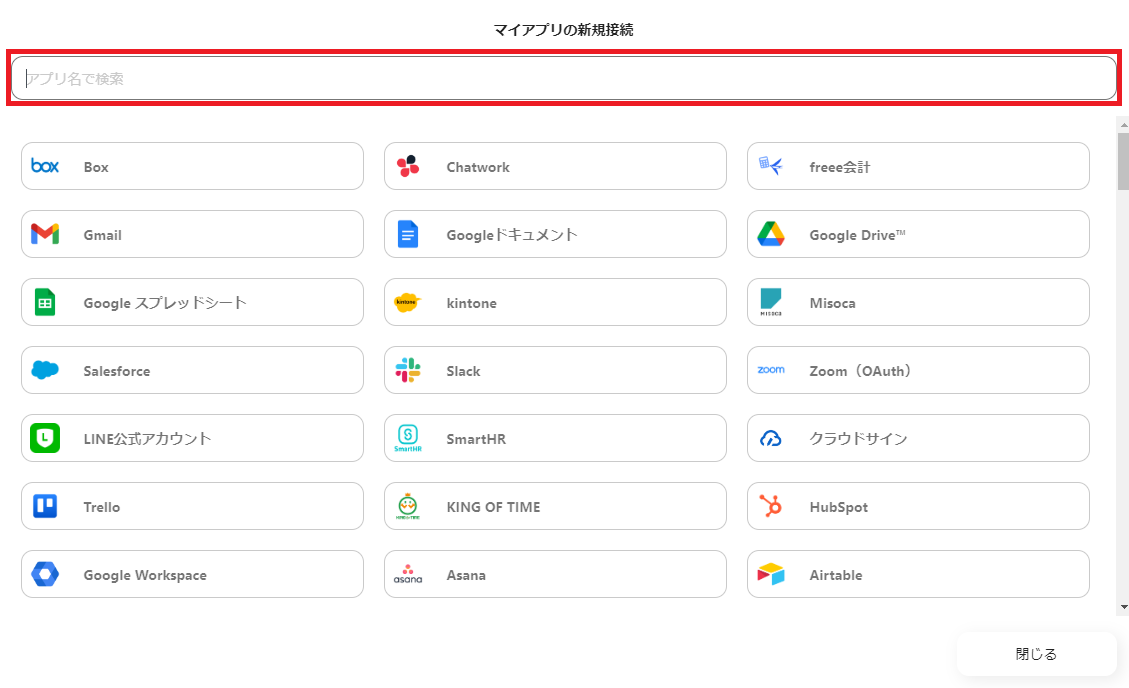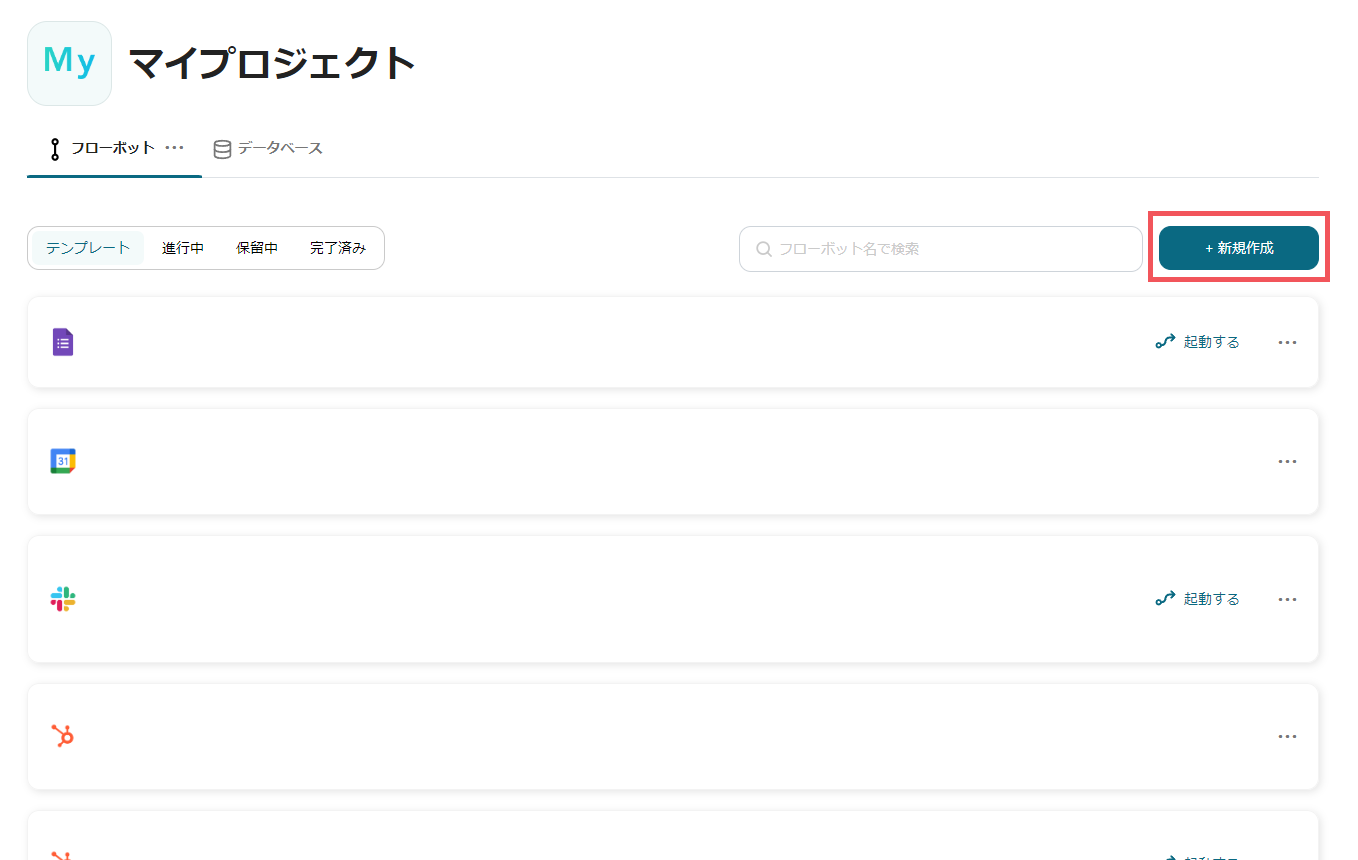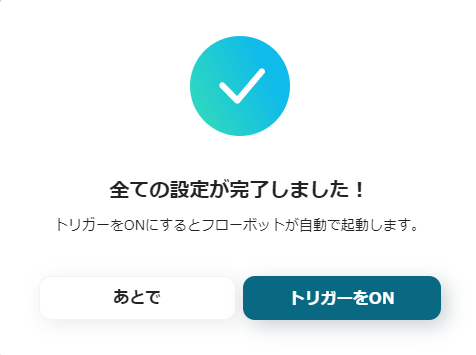① My App Integration
After logging into Yoom, select "My Apps" from the left menu.

After the screen transition, please press "+ New Connection".

Enter the name of the app you want to integrate in the search box, and complete the integration by logging in or signing in according to the screen instructions.
This time, we will register "Google Forms" and "Pipedrive".
Once registration is complete, icons will appear in the list of My Apps.

② Copy Existing Template
Register a lead in Pipedrive when a Google Form is submitted
By using the above template, you can easily automate the process.
First, open My Projects in Yoom and press "+ New Connection".

Next, select "Create from Template Gallery".

Enter "Register a lead in Pipedrive when a Google Form is submitted" in the search box at the top right and search.
On the right side of the displayed template, there is "Create Template" in blue, so please select it.

This completes the template copy. A popup will appear, so press OK.
From here, proceed with the settings mainly on the "!" part on the screen as instructed.

③ Trigger Settings
First, select "When a response is submitted to the form" and check the settings.
Enter the account information to be linked and press "Next".


Then, it will transition to a screen like the one below.
Proceed with the input according to the setting method and the notes below the input field.

The output can be used in the subsequent Pipedrive settings.
※ For how to obtain the response content when using Google Forms as a trigger, please refer to here.
In the detailed settings, you can set simultaneous activation. Please set it as needed.
If there are no problems with the settings, let's return to the first screen with "Save".

④ Integration App Settings
Next, select "Create Lead" and enter the account information to be linked.
Press "Next" to proceed with the settings.


When the screen transitions, the following setting items will appear, so fill them in, focusing on the required items.
As mentioned earlier, you can easily set it using the output.
Proceed while checking the supplementary content below the input field.


Although not set this time, as an example, if you create items such as "Name" and "Company Name" in Google Forms, they can be used in the title when creating a lead in Pipedrive.
This part varies depending on the lead management method, so please set it according to your situation.

Scroll down and set the detailed settings as desired.
Here, you can set errors and intervals.

"Save" and the following popup will appear.
Press "Turn on Trigger", and if the trigger at the top of the first screen looks like the image, it's OK!


This completes all the settings for "Register a lead in Pipedrive when a Google Form is submitted".
Well done!
Other Examples of Automation Using Google Forms and Pipedrive
There are many other examples of automation using Google Forms and Pipedrive in Yoom, so here are a few.
① When there is a response to a Google Form, this flow extracts the response content with AI and records it in a Google Spreadsheet. Recommended for those who want to manage responses in a database.














.avif)




.avif)
.png)
.png)






